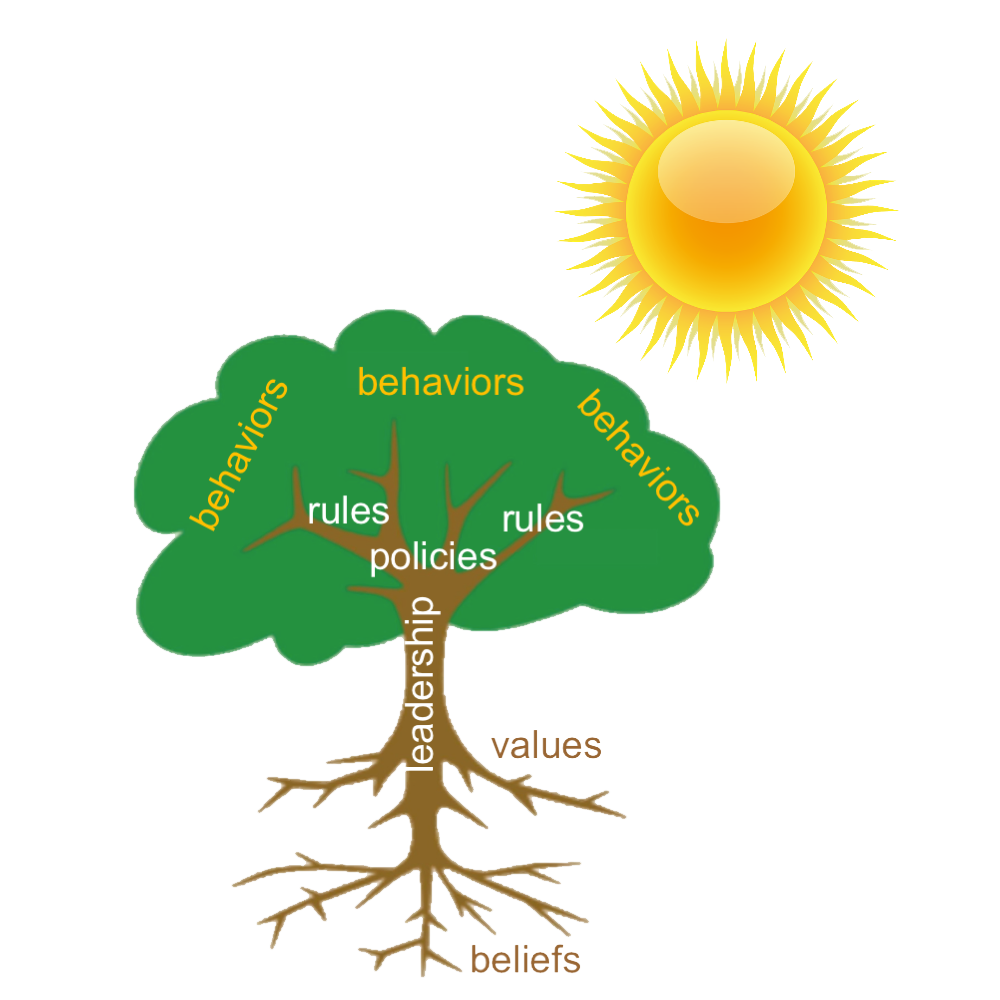Sunshine
Sunshine
Play Description
The first play in the Agile Transformation Playbook, Sunshine, focuses on changing the behavior of the team members or organization first, with the assumption that changing behavior will ultimately lead to a change in culture. It’s called, “Sunshine” because it focuses on changing behavior, the leaves of the cultural tree, much like sun shines on leaves to fuel growth.

The “Sunshine” play loosely follows Lewin’s Change Model, which emphasizes unfreezing a team or organization’s current behavior, changing that behavior, and then re-freezing that behavior once you’ve achieved the desired result.
In order to implement the “Sunshine” play, you simply have the team or enterprise start to use agile practices. For example, if you hope the team will learn and use the Scrum Framework, bring them together and hold a Sprint Planning session. Follow that up with daily Scrums, and close it out with a Sprint Review and Sprint Retrospective, just as described in Scrum Foundations eLearning and the Scrum Guide.
Use When…
There are a number of factors that create an environment where the “Sunshine” play will work, including:
- No Resistance to Agile. Participants are not resistant to agile and often favor an agile transformation. Because they are open to agile, they will be receptive to learning agile frameworks and “doing” agile. The challenge for this organization, instead, is that they don’t know HOW to “do” agile. For example, they haven’t selected an agile framework or they know very little about how to use the framework they’ve selected.
- You have a Small Budget. Believe it or not, agile transformations don’t have to cost a lot of money. In many cases, you can trade money for additional time to adopt agile. So, if you have a small implementation budget, “Sunshine” can be quite effective because it does not require a large budget and army of agile coaches.
- No Specific Deadline. Though it can be successful, the “Sunshine” play slowly builds knowledge and understanding among staff, so it takes a relatively long time to bear fruit. So, it is best implemented in situations where there’s NO specific deadline for agile adoption.
If two or more the the characteristics above exist, there’s a good chance the “Sunshine” play will be successful for you. However, if there’s resistance to agile or you have an aggressive deadline, there’s a good chance that a “Sunshine” approach will fail.
Advantages
- Simple and straightforward. As long as individuals are in favor of agile, the sunshine play is easy to implement. The individuals leading the transformation just need to teach the appropriate frameworks and help the organization to grow.
- Don’t need expert coaching. Though helpful, Agile Coaches are generally not required to be successful with a “Sunshine” play.
- Low cost. Because coaches aren’t needed, many organizations can use this play at relatively low cost, by leveraging trainers or hiring capable agilists, allowing agile to flourish organically.
- Supported by Lewin’s change model. Because Lewin’s change model begins with changing behavior just like the “Sunshine” play, applying the concepts behind Lewin’s change model works nicely in tandem with the “Sunshine” play.
Disadvantages
- Requires tacit acceptance. Though explicit acceptance of agile is ideal, at minimum, the majority of the organization needs to accept agile values and principles for the “Sunshine” play to be implemented successfully. If enough detractors exist, “Sunshine” is unlikely to gain traction.
- Over-emphasis on “doing agile” over “being agile”. Because “Sunshine” emphasizes adopting agile practices and employing them on a daily basis before the reason for use is well understood, it tends to emphasize “doing agile” over “being agile”.
- Fails to address systemic problems. Because “Sunshine” changes individual and team behaviors, it generally fails to address systemic problems, such as the organization’s structure.
- Doesn’t scale to enterprise well. “Sunshine” generally works well with teams, but because enterprise agile often requires organizational change — and change generally triggers resistance — it typically does not succeed when applied at scale. The result, instead, is pockets of agility instead of enterprise agility.

